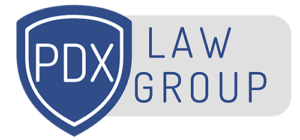Bankruptcy doesn’t just clean up after the failure of a business. Bankruptcy can also prevent that failure in the first place.
General Motors: 2009 vs. 2013
When General Motors filed bankruptcy in 2009, it was insolvent: it owed about $173 billion and had assets of less than half that, about $82 billion. It was not able to pay its bills when they became due.
Through bankruptcy the business shed a significant amount of its debts, reduced its U.S. plants from 47 to 34 and its U.S. employees from 91,000 to 68,500. It sold or closed the following vehicle brands: Hummer, Pontiac, Saturn, and Saab. In return for a $50 billion loan from the U.S. government, the nation’s taxpayers became 60.8% owners of G.M.
Now, four years later G.M. is profitable again. By the end of 2013 the government is expected to sell the last of its common stock in the company. According to the Center for Automotive Research, the rescue of the U.S. auto industry—including G.M.—saved 1.14 million jobs at automakers and other companies that rely on them.
If you own and operate a small business, maybe a bankruptcy could save that business, and your job in that business.
Your Business as a Sole Proprietorship
Practically speaking, your business is operated as a sole proprietorship if you did not create a corporation, limited liability (LLC), partnership, or any other kind of formal legal entity when you set up that business. You own and operate your business by yourself for yourself, although the business may have a formal or informal “assumed business name” or “DBA” (“doing business as”).
There are various advantages and disadvantages of operating your business this way. For our immediate purposes what’s important is that you and your business are legally treated as a single economic entity. That’s different than if your business operated as a corporation which would legally own its own assets and owe its own debts, distinct from you and any other shareholder(s). This blog post, and the next few on this broad topic of business bankruptcies, assumes that you operate your business as a sole proprietorship.
Chapter 7
Chapter 7, “straight bankruptcy,” or “liquidating bankruptcy,” allows you to “discharge” (legally write off) your debts in return for liquidation—surrendering your assets to the bankruptcy trustee in order to be sold and the proceeds distributed to your creditors. In most Chapter 7 cases you receive a discharge of your debts even though none of your assets are surrendered and liquidated, because everything you own is protected–“exempt.”
But if you own an ongoing business—again, a sole proprietorship—which you intend to keep operating, Chapter 7 may be a risky option. You and your attorney would need to determine if all your business’ assets would be exempt under the laws applicable to your state. Certain crucial assets of your business—perhaps its accounts receivable, customer list, business name, or favorable premises lease—may not be exempt, and thus subject to being taken by the trustee. Proceed very carefully to avoid having your business effectively shut down in this way.
Chapter 13
The Chapter 13 “adjustment of debts” bankruptcy option is generally better designed than Chapter 7 for ongoing sole proprietorship businesses. It provides much better mechanisms for retaining your personal and business assets. Even business (and personal) assets that are not “exempt” can usually be protected through a Chapter 13 plan.
You and your business get immediate relief from your creditors, usually along with a significant reduction in the amount of debt to be repaid. So Chapter 13 helps both your immediate cash flow and the long-term prospects for the business. It is also an excellent way to deal with tax debts, often a major issue for struggling businesses. Overall, it allows you to continue operating your business while taking care of a streamlined set of debts.
Next…
In the next few blogs we will focus on some of the most important benefits of filing a business Chapter 13 case.
